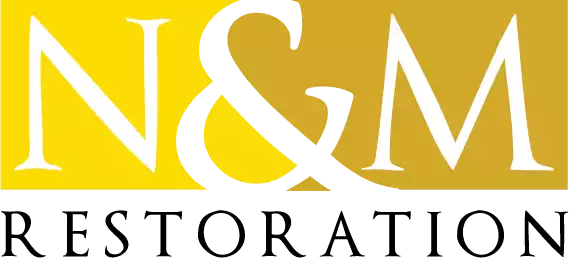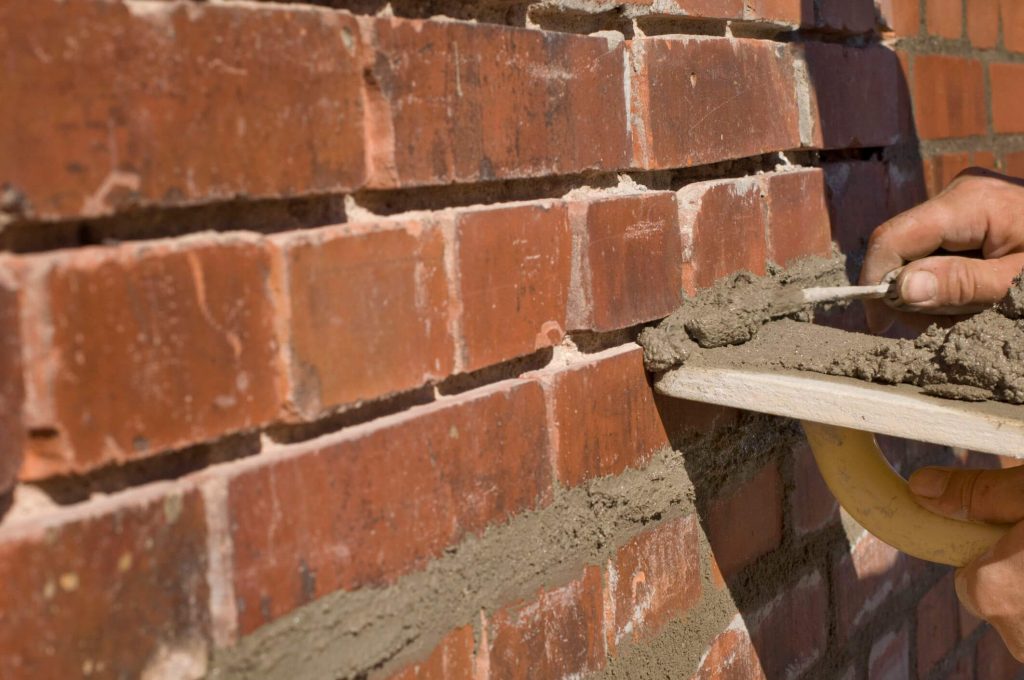THE BEST TYPES OF MORTAR JOINTS – GROOVE JOINT OR CONCAVE JOINT
The best mortar joint style for moisture protection is the groove or concave joint. This is what you will see on most brick homes, where the mortar has a slight curve inward. It looks as though the mortar has lightly been pressed by a finger, but bricklayers actually use a curved jointing tool to create groove joints. The recessed form of the mortar joint allows water to easily drain down the brick, which prevents mortar buildup.
VEE MORTAR JOINTS (V JOINTS)
Vee joints are similar to groove joints, but instead of a smooth curve, they feature a v-shaped indention. This mortar joint style also does well at guiding precipitation down a masonry wall. In many cases, homeowners will opt for a Vee joint in favor of a concave joint because of a design preference.
WEATHER MORTAR JOINT
Weather mortar joints involve mortar cut at a diagonal angle. If you looked at the mortar from the side, it would appear to be in a triangular shape, with the smallest point of the triangle hitting the underside of the brick above. When laid at the opposite angle, the design is called a struck joint. Neither struck joints nor weather joints provide the strong watertight protection that groove joints offer.
EXTRUDED MORTAR JOINT
Have you ever seen bricks that look like mortar is oozing out from under them? That’s the result of extruded mortar joints. This style was popular from the 1930s to the 1950s, but it has since become dated and downright messy looking.
In addition to being visually unappealing, extruded mortar joints are highly susceptible to deterioration. The excess mortar squeezing out of the bricks becomes warn with persistent weather exposure. As the mortar begins to crumble, it damages the structure of surrounding bricks and leaves them susceptible to freeze-thaw damage. It’s best to have extruded mortar replaced with groove mortar, if possible.
RAKED MORTAR JOINT
Raked mortar does not come all the way to the edge of the bricks. The mortar is raked out to expose the edge of the bricks. Raked mortar joints can be compacted to provide a better seal, but the exposed edge of the brick is still subject to damage. Luckily, it is easy to turn a raked joint into a concave mortar joint to improve performance.
FLUSHED MORTAR JOINT
Flush joints involve mortar that is directly level with the brick. There is no curve or dent in the mortar like you would find in other joint styles. It is difficult to create a tight bond between the brick and mortar in the case of a flushed joint. This style is usually used when a brick wall is going to be covered with plaster or another exterior coating. Because flush joints are difficult to compress properly, they are still inferior to concave joints. They also take more time to complete, which adds to the labor expenses for brick repair or brick installation.
Other Types of Mortar Joints
There are many other mortar joint styles to choose from, including grapevine joints, beaded joints, and more. They all have stylistic relevance, but they aren’t ideal for long-term performance. Concave joints are tested and proven to work in a variety of climates, including heavy rain and snowfall. You can’t go wrong with grooved mortar.
If your existing mortar is crumbling, cracking, or damaged in any way, you may be in need of repointing services. This process involves removing the exterior layer of mortar and replacing it with new, color-matched mortar. Repointing protects the structural integrity of the bricks and creates a firm seal against moisture.
N&M Restoration offers brick repair, tuckpointing, repointing, and other masonry services in Metro Detroit MI. To schedule your no-obligation consultation, please contact us at (248) 924-9798.





